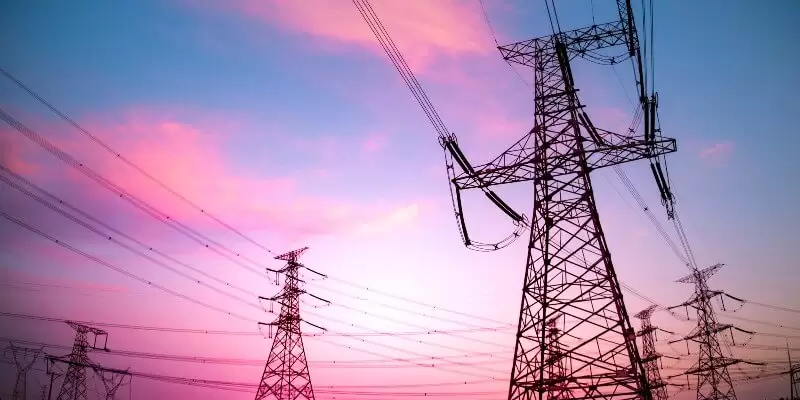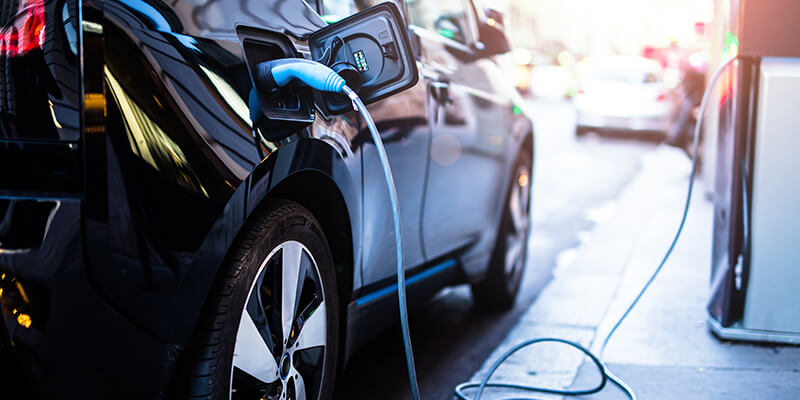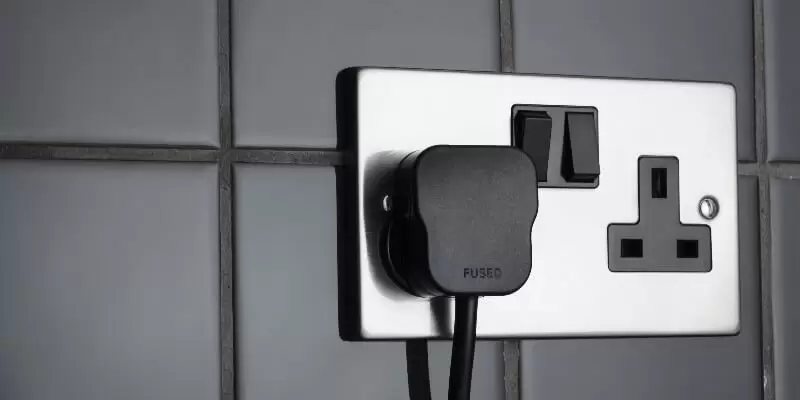The world is filled with weird and wonderful facts about absolutely everything we see, hear and feel every day. Electricity, in particular, is something that we rely on day in, day out, without really thinking too much into it. However, did you know that there are tonnes of cool fun facts about electricity that make this everyday necessity an interesting phenomenon?
Did you know these interesting facts about electricity?
Having spent many years as electricians in Milton Keynes, we spend our days surrounded by this bundle of built-up energy. From switching on a light to powering your cooker, almost everything that we use in day-to-day life requires some form of electricity – even the body (we’ll get into this later!). So, if you’re just as intrigued as we are about this amazing form of energy, let’s take a closer look at ten interesting facts about electricity, including the following:
- Ever wondered how fast does electricity travel? The answer is the speed of light!
- Lightning is caused by the discharge of electricity in the atmosphere
- Electricity was first discovered in 600BC
- Electric cars actually date back as far as 1832
- Electric eels can produce up to a 600-volt shock
- 54% of all electricity is wasted
- It’s the water in the body that causes an electric shock
- Electricity plays a role in your heartbeat
- LED lightbulbs use 80% less electricity
- Some electrics should be tested every 12-24 months

1. Ever wondered how fast does electricity travel? The answer is the speed of light!
It has been proven that electricity travels at the same speed as light, which totals an astonishing 670,616,629 miles per hour. To break this down further, 670,616,629 miles per hour equals 300 million meters per second!
So, how does electricity travel so quickly? Well, it is all down to a combination of electrons and an electric current. A flow of electricity is made from many minuscule particles, otherwise known as electrons. When static, the electrons actually move incredibly slowly. However, whenever you use an electrical device, it will be equipped with a wire, which is what enables the electrons to travel from your power supply to your device. The flow is technically known as an electric current, which will only begin its journey when you turn on your device. You can find more information about how fast electricity travels on Vivint Solar.

2. Lightning is caused by the discharge of electricity in the atmosphere
Lightning is, in fact, caused by one huge electric current. While the clouds may seem to be peacefully moving across the sky, they are actually deceptively active. With ever-changing weather conditions, water and ice are forced up into the atmosphere by warm air currents and then forced back down by gravity. During their travels, the pair become compressed in the clouds, circulating not only around but also inside.
Over time, an electric charge starts to build up inside the clouds – similar to when you rub a balloon against a surface to create static electricity. Inside the clouds, there are now positive electric charges building up at the top and negative resting along the bottom. These then try their hardest to reach each other in an attempt to neutralise.
On a normal day, this isn’t a problem; however, on a stormy day, the turbulent winds cause the electric charges to separate. The negative charges start moving towards the ground, known to scientists as a ‘stepped leader.’ In the meantime, an ‘upward leader’ forms on the earth below, pushing positive charges up into the air. When these meet, they create a giant electric current, which shoots up into the cloud – this is known as lightning!
3. Electricity was first discovered in 600BC
There are many reports that state different dates regarding the discovery of electricity. However, according to Universe Today, electricity dates back as far as 600BC with the Ancient Greeks. The Greeks concluded that by rubbing fur against amber made from fossilised tree resin, they could create their own form of static electricity.
In addition to the Greek discovery, it is also thought that the Romans may have used electricity to create batteries. Back in the 1930s, archaeologists tracked down a set of posts that were designed with copper sheets hidden inside. Experts believe that the Romans used these pots as batteries to power lights.
4. Electric cars actually date back as far as 1832
While most see electric vehicles as a relatively new invention, they actually date back as far as the 1800s. Between 1828 and 1835, Hungarian and American innovators were the first to experiment with small-scale electric cars. Budding inventor, Robert Anderson, developed the first crude electric vehicle in 1832; however, it wasn’t until the 1870s that the car became ‘driveable’ and able to transport passengers from A to B.
More than 60 years after its first invention, the electric vehicle started to grow in popularity. Models were finally easy to drive and no longer gave off a pungent smell of pollutants. They were particularly sought-after amongst women, who wanted a stylish vehicle to travel around the city. By the next century, it is thought that electric cars accounted for up to one-third of all vehicles on the roads! For more information on the history behind the electric car, take a look at Energy.Gov for a detailed timeline.
Alternatively, if you’re considering investing in an electric vehicle charging unit for your electric car, you can take a look at our previous article on the benefits of an EV. If you’re ready for a quote, head straight to our online quoting tool.

5. Electric eels can produce up to a 600-volt shock
While this fact may seem a little peculiar, it was too interesting not to include in our article! Despite the name, electric eels are actually a type of fish, but this doesn’t change the fact that they can be incredibly dangerous. Each eel is born with around 6,000 specialised cells known as electrocytes; these are capable of producing an enormous electrical charge of up to 600 volts. Luckily, the eels only release this charge when they are either hunting or spot a predator. More information on electric eels can be found on National Geographic.

6. 54% of all electricity is wasted
We’re always encouraged to try our very hardest to make the most out of the energy we use, but why? Based on a recent report by The Association for Decentralised Energy, a vast 54% of energy is wasted every single year in the UK, which amounts to a shocking £9.5 billion. When this is broken down further, per household alone, this could be as much as £354, which is more than half the average electricity bill of those living in the UK.
While this is most definitely a surprising statistic, there are many super easy ways to begin to save energy in the home. From unplugging gadgets when they are no longer in use to washing clothes at a lower temperature, you can start making savings in no time. Find out more handy tips on Uswitch!

7. It’s the water in the body that causes an electric shock
Having worked as electricians in Milton Keynes for several years, you would be surprised how many emergency calls we receive from customers who have given themselves an electric shock. While we’re all cautious to ensure that we stay safe around electrics, did you know that the cause of a shock is actually the water inside your body?
As humans, our bodies are made up of up to 60% water, which makes us fantastic conductors of electricity. High-powered electricity is always on the lookout for the path which offers the least resistance and if we come into contact with it, this means that it goes straight to the water flowing through the body, resulting in an electric shock. In return, the muscles begin to tighten, and the lungs become narrower, causing an instant and dangerous reaction.

8. Electricity plays a role in your heartbeat
Every function and movement within the body is triggered through signals, including your heart. Each time that your heart is given the go-ahead to beat, blood is pumped around the body. This signal is passed through the body anywhere from 40-something to over 100 times a minute. This particular function is, in fact, caused by your body’s own electricity.
The heart’s electrical system is made up of three key structures; these are scientifically known as the S-A Node, A-V Node and His-Purkinje System. The S-A Node, also known as the heart’s natural pacemaker, is a collection of cells which is in the upper-right of your heart. These cells are responsible for sending the signals to tell your heart to beat. The signals then travel to the A-V Node, which is a form of ‘bridge’ for the electricity to pass through. Lastly, once this reaches the His-Purkinje System, your heart will beat.
9. LED lightbulbs use 80% less electricity
When using a conventional lightbulb, only around 10% of the electricity used to power the bulb actually goes on light – a huge 90% is wasted through heat. This is just one of the many reasons why more and more homeowners are opting to switch to LED alternatives, not to mention how much better they are for the environment!
Trading in your regular old lightbulbs for LEDs comes alongside an array of benefits. Not only do they use more than five times less energy, but they also last 25 times longer and cost six times less. More information on the difference between LED and incandescent lightbulbs can be found on Arcadia Power.
10. Some electrics should be tested every 12-24 months
If you’re a business or commercial premises owner, you need to ensure that electrical devices are regularly PAT tested to guarantee their safety. During a PAT test, electrical appliances are assessed through visual inspections and electronic tests. They’ll then be marked as either pass or fail. There are no set rules regarding the time period for checking as it differs based on the industry that you’re in. For example, equipment in schools should be tested every 12 months, whereas those in an office can be every 48 months.
As specialists in PAT testing in Milton Keynes, Heath Electrical Services are always more than happy to visit you on-site to check that all appliances are in good working order. All electricians are NICEIC registered, which means that all testing will be completed to the highest standard. Contact us for more information on electrical testing in Milton Keynes.
Learn something new with our facts on electricity!
There is always something new to learn – from the incredible speed of electricity to the body’s own electrical system; there are millions of facts that we’re yet to uncover. Our ten facts on electricity offer just a handful of the interesting secrets about this widely used resource. If you’re interested in learning more, then you can find 25 extra facts over on Glo Bird Energy!













